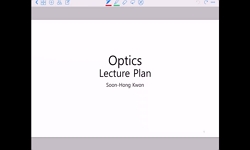1995년 5․31 교육개혁정책 이후 진행된 고등육기회의 보편화는 대학서열구조에 대한 고려가 없이 진행되어 소위 명문대학에 입학하려는 경쟁을 가속해왔다. 중등교육이 보편화된 이후 교...
http://chineseinput.net/에서 pinyin(병음)방식으로 중국어를 변환할 수 있습니다.
변환된 중국어를 복사하여 사용하시면 됩니다.
- 中文 을 입력하시려면 zhongwen을 입력하시고 space를누르시면됩니다.
- 北京 을 입력하시려면 beijing을 입력하시고 space를 누르시면 됩니다.
https://www.riss.kr/link?id=A103118289
- 저자
- 발행기관
- 학술지명
- 권호사항
-
발행연도
2015
-
작성언어
-
- 주제어
-
KDC
330
-
등재정보
KCI등재
-
자료형태
학술저널
-
수록면
139-186(48쪽)
- DOI식별코드
- 제공처
- 소장기관
-
0
상세조회 -
0
다운로드
부가정보
국문 초록 (Abstract)
1995년 5․31 교육개혁정책 이후 진행된 고등육기회의 보편화는 대학서열구조에 대한 고려가 없이 진행되어 소위 명문대학에 입학하려는 경쟁을 가속해왔다. 중등교육이 보편화된 이후 교육포부의 수준이 4년제 대학을 졸업하는 것으로 동질화 되고 고등교육의 수요가 높아지면서 실행된 고등교육기회의 확장은 가족계획 정책효과가 나타난 1980년대 이후의 인구동태에 대한 고려를 결하고 있다. 이에 더해 산업구조나 노동시장이 증가하는 고학력 인구를 수용할 수 없는 상태에서 이루어진 고등교육기회의 확장은 4년제 대학 졸업자의 수가 증가하면서 고등교육에 대한 투자 수익률, 즉 대학교육성과의 양극화를 결과했다. 본 연구는 1990년대 중반 이후 진행된 고등교육기회의 급격한 팽창은 역설적이게도 1987년 민주화 과정을 겪으면서 우리사회
에 더욱 깊이 뿌리내린 평등주의와 90년대에 고착화되기 시작한 계층구조의 공고화가 상호작용한 것이라는 것을 보인다. 그러한 과정에서 한국사회의 불평등의 심화가 가져오는 사회적 불만을 고등교육기회의 팽창이라는 정책수단으로 일부 해소하려 했지만 학생 개인의 가족배경이나 그것을 통해 동원 할 수 있는 자원의 양에 따라 입학하는 대학의 서열을 결정하는 정도가 높
아지는 고등교육의 양적팽창은 학교교육에 대한 신뢰를 떨어뜨리고 교육 불평등을 완화하기는커녕 심화시키고 있다. 한국 고등교육팽창 정책의 이러한 실패에 대해 우리사회는 이것을 단순히 교육의 문제로서가 아니라 정치의 차원에서 그리고 전체 사회의 차원에서 교육적 재화의 공정한 분배에 대해 다시 고민하고 실행해야 할 것이다.
다국어 초록 (Multilingual Abstract)
Since 5․31 Educational Reform in 1995, Korean higher education expanded and opportunity for higher education became almost universal. But this expansion did not consider existing rank order of universities and thus competition for prestigious un...
Since 5․31 Educational Reform in 1995, Korean higher education expanded and opportunity for higher education became almost universal. But this expansion did not consider existing rank order of universities and thus competition for prestigious universities has been intensified. After secondary education in Korea became universalized, almost all Korean adolescents’ educational expectation became four-year college. Such elevation of educational expectation raised demand for higher education in Korea. However Korea’s expansion of higher education responding to this demand did not consider demographic change in 1980s resulted from family planning policy in 1970s. In addition, industry structure and labor market could not accommodate fast increase of highly educated population at that time and consequently returns to college education become polarized. This study argues that fast increase of opportunity for higher education from the middle of 1990s is the result of interaction between ironically strengthened egalitarianism in Koreans after democratization process since 1987 and crystallization of class structure in 1990s. In the process, Korean government used the increase of opportunity for higher education as a policy measure to resolve the problem of deepening inequality. However, as the tendency of private resource determining college ranking admitted has gotten intensified, Koreans has lost trust in formal school education and expansion of higher education has not lessened inequality but deepened. The failure of Korea’s higher education expansion policy require us to rethink about the fair allocation of unevenly existing educational goods not at the level of education policy but at the level of politics and our society as a whole.
목차 (Table of Contents)
- Ⅰ. 들어가는 말
- Ⅱ. 한국사회의 학력주의와 고등교육팽창
- Ⅲ. 한국사회에서 학력주의의 기원과 초기적 형성
- Ⅳ. 1960․70년대 한국사회에서 학교팽창과 고등교육수요의 폭발
- Ⅴ. 1980년 한국사회의 학력주의 진단
- Ⅰ. 들어가는 말
- Ⅱ. 한국사회의 학력주의와 고등교육팽창
- Ⅲ. 한국사회에서 학력주의의 기원과 초기적 형성
- Ⅳ. 1960․70년대 한국사회에서 학교팽창과 고등교육수요의 폭발
- Ⅴ. 1980년 한국사회의 학력주의 진단
- Ⅵ. 1990년대의 고등교육팽창과 대학서열체제의 강화 그리고 평준화의 해체
- Ⅶ. 맺음말
- 참고문헌
동일학술지(권/호) 다른 논문
-
- 동양사회사상학회
- 정승안(Jung Seung An)
- 2015
- KCI등재
-
- 동양사회사상학회
- 이 철(Lee Chul)
- 2015
- KCI등재
-
- 동양사회사상학회
- 권오헌(Gwon O Heon)
- 2015
- KCI등재
-
- 동양사회사상학회
- 여현철(Yeo Hyun Chul)
- 2015
- KCI등재





 스콜라
스콜라







